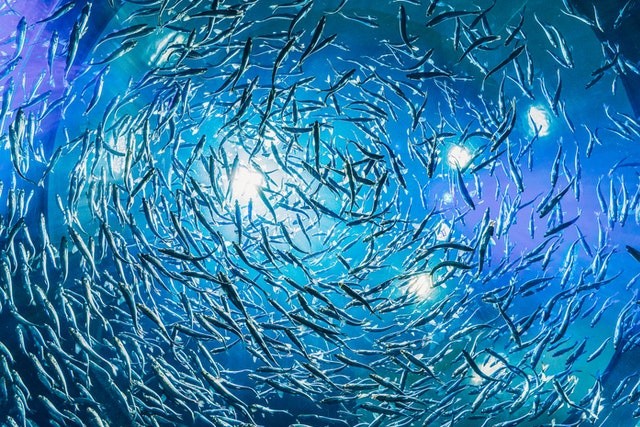Antarctica appears barren at first look. The continent is coated by a mile-thick ice sheet, known for howling gales and extremely severe temperatures. The glacier shorelines are occasionally flecked with elephant seals and seagulls.

However, the Southern Ocean is teeming with life below the waves, with vivid swathes of sea ice algae and cyanobacteria, swarming krill and crustaceans, bristling kelp forests, enormous polar bears, sea spiders and sponges, whale pods, and vast Antarctic fish species.
These fish serve an essential part in the food web of the Southern Ocean's 9,000 known marine species, yet their subzero sanctuary may be threatened. According to a 2021 climate estimate, certain regions of the Antarctic continental shelf would be at least 1 degree Celsius warmer by 2050.
Studying Icefishes

Researchers from Virginia Tech's Fralin Biomedical Research Institute at VTC have published new research in PLOS ONE detailing how two species of Antarctic fish respond to acute heat stress, one with hemoglobin in its blood cells and the other without.
Both species responded to progressive warming with an elaborate array of behavioral maneuvers, including fanning and splaying their fins, breathing at the surface, startle-like behavior, and brief bouts of alternating movement and rest, according to the research team, which Virginia Tech Vice President led for Health Sciences and Technology Michael Friedlander.
"Our team discovered that Antarctic fishes compensate for rising metabolic demands by increasing respiration through species-specific locomotor and respiratory responses, demonstrating resilience to environmental change and possibly global warming," said Friedlander, who is also the executive director of the Fralin Biomedical Research Institute. "Ambient warming poses a multi-faceted challenge to the fish, including an increased temperature of the central nervous system and target tissues such as skeletal and cardiac muscles, as well as decreased availability of dissolved oxygen in the water that passes through the gills during respiration. While these findings suggest that Antarctic fishes may be able to behaviorally adapt to some extent under extreme conditions, little is known about the effects of environmental warming."
Related Article: Changes in Oceanic Temperature and Current are Direly Affecting Extreme Weather Events
Changes in Behavior
"Behavioral manifestations that we've described demonstrate that these fishes have the tremendous physiological capacity to endure environmental changes," said Iskander Ismailov, the paper's lead author and a research assistant professor in Friedlander's laboratory during the study.
Observing the Fishes

Southern Ocean fish species have evolved well adapted to their icy ecology after millions of years of seclusion from the rest of the globe, thanks to the Antarctic Circumpolar Current.
One of the scientists researched by the scientists is the blackfin icefish, Chaenocephalus aceratus, which has opalescent blood. These fish are among the rare vertebrates deficient in hemoglobin, a protein found in red blood cells that effectively transports oxygen from the lungs of land-dwelling vertebrates or the gills of aquatic vertebrates throughout the body's organs. Instead, blackfin icefish transport oxygen dissolved in blood plasma, around 10% of hemoglobin's oxygen-carrying capability.
The fish were acclimated to the lab settings before being moved to the experimental tank, where the water temperature climbed at a pace of 3 degrees per hour from -1.8 to 13 degrees Celsius. The researchers evaluated and quantified the fishes' motility, respiration rate, tank moves, and fin movements thanks to extensive video recordings.
For more news from the animal kingdom, don't forget to follow Nature World News!
© 2025 NatureWorldNews.com All rights reserved. Do not reproduce without permission.





